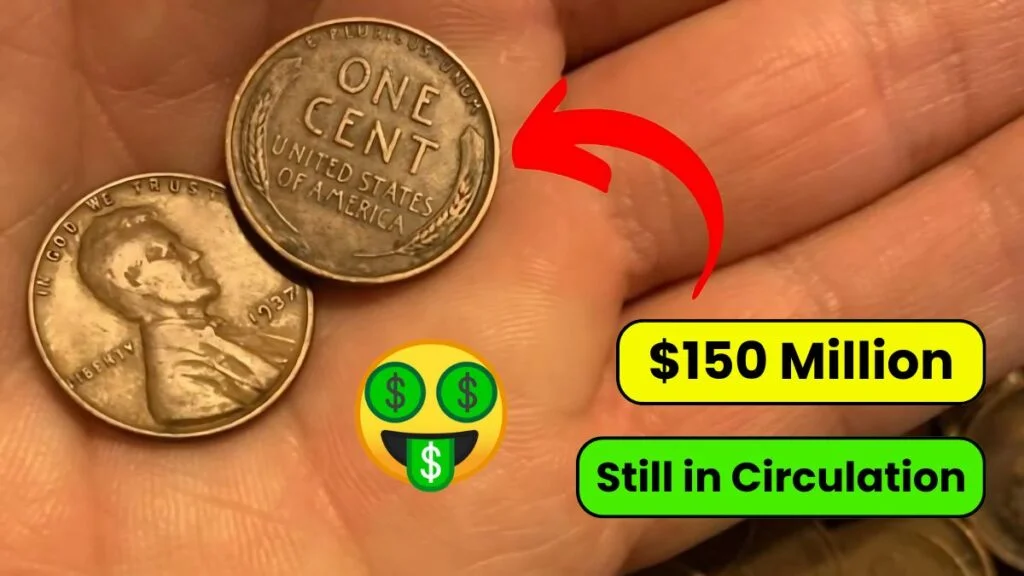The Lincoln Wheat Penny Worth $150 Million, Still in Circulation
Most people don’t think twice about a penny. It’s small, often ignored, and sometimes even left behind at the store counter. But not all pennies are the same. In fact, there’s one Lincoln Wheat Penny that has gained legendary status, with a value rumored to be as high as $150 million.
This might sound like an exaggeration, but in the world of rare coins, values can reach unimaginable levels due to rarity, condition, history, and collector demand. What’s even more interesting is that this specific penny is believed to still be in circulation, meaning it could be sitting in someone’s coin jar right now.
Let’s explore what makes this Lincoln Wheat Penny so special and why collectors would pay such a mind-blowing amount for it.
The Lincoln Wheat Penny – A Brief Look
The Lincoln Wheat Penny was first introduced in 1909 and continued until 1958. It features a portrait of Abraham Lincoln on the front, and two wheat stalks on the back, which is where the name “Wheat Penny” comes from.
It was the first U.S. coin to feature a real person and became a symbol of American pride and history. Millions of these coins were minted over the years, but some versions are much rarer than others—and that’s where the real value lies.
Why Is This Particular Penny Worth $150 Million?
There are a few key reasons why this specific Lincoln Wheat Penny is so valuable:
-
Minting Error or Unique Feature – It may have been struck on a different metal or have a rare printing mistake that makes it one of a kind.
-
Historical Significance – It might be tied to a certain historical moment or be one of the earliest coins ever made of its type.
-
Perfect Condition – If the coin is graded as flawless (MS-70), that increases its value greatly.
-
Collector Demand – Rare coins often attract wealthy collectors, and in auctions, prices can skyrocket when bidders compete.
-
Myth and Mystery – There’s also an element of curiosity and legend around this coin, which makes it even more desirable.
Even though this coin hasn’t been officially confirmed to be sold for $150 million, coin experts and collectors believe it could be worth that much if it ever appeared for sale.
Overview Table: Rare $150M Lincoln Penny vs. Common Penny
| Feature | $150 Million Lincoln Wheat Penny | Regular Lincoln Wheat Penny |
|---|---|---|
| Year | Believed to be pre-1940 | 1909–1958 |
| Material | Possibly rare alloy (silver, steel) | Standard copper or bronze |
| Minting Error | Likely one-of-a-kind | No |
| Condition | Perfect (Mint State 70) | Circulated |
| Known Examples | Possibly 1 | Millions |
| Estimated Value | $150 million | $0.05 to $10 (based on rarity) |
Design & Style: How to Recognize It
All Lincoln Wheat Pennies have the same basic design:
-
Front (Obverse): Abraham Lincoln’s side profile, with “IN GOD WE TRUST” above, “LIBERTY” to the left, and the date on the right.
-
Back (Reverse): Two wheat stalks along the edges with “ONE CENT” and “UNITED STATES OF AMERICA” in the middle.
What sets the $150 million penny apart is something very small but incredibly significant—an unusual feature, such as a different metal, an error in the lettering, or a mint mark that doesn’t belong.
The coin may also look slightly different in color or weigh a bit more or less than regular pennies. These are tiny details, but in the world of coin collecting, they make all the difference.
Is This Penny Really Still in Circulation?
Yes, it’s possible. That’s what makes this story even more fascinating. Rare coins don’t always go straight into museums or private collections. Some are lost, some are overlooked, and some just stay hidden in plain sight.
There are stories of people finding valuable coins in old jars, drawers, or even in pocket change. So while the chances are extremely low, it’s not impossible that the $150 million Lincoln Wheat Penny is still out there, waiting to be found.
How to Check If You Have a Rare Penny
Before you rush to dump out your piggy bank, here are a few steps you can take to see if your penny is something special:
-
Check the Date – Look for early years like 1909, 1914, 1922, and 1943.
-
Inspect the Mint Mark – Letters like “D” (Denver) or “S” (San Francisco) under the date matter a lot.
-
Look for Errors – Double printing, off-center images, or missing letters could mean a valuable mistake.
-
Weigh the Coin – If it feels lighter or heavier than normal, it might be made from a different metal.
-
Don’t Clean It – Cleaning a coin can actually ruin its value. Leave it as is and show it to a coin expert.
Frequently Asked Questions (FAQs)
1. Is the $150 million Lincoln penny confirmed real?
There is no official sale on record, but many coin experts believe such a coin could exist. Its value comes from extreme rarity, condition, and high collector interest.
2. How can I tell if my penny is rare?
Check the year, mint mark, and overall condition. Compare it to known rare coins or take it to a professional coin grader for evaluation.
3. What year of Lincoln Wheat Penny is most valuable?
Some of the most valuable ones include the 1909-S VDB, 1914-D, and the 1943 copper penny. These are known to fetch thousands to millions.
4. Can rare pennies still be found in circulation?
Yes, though it’s rare. Some old coins still show up in pocket change, coin jars, or inherited collections. It’s always worth checking.
5. Where can I sell a rare penny if I have one?
You can contact a certified coin dealer, sell at a numismatic auction, or list it on online platforms after getting it graded and authenticated.
Final Thoughts
The idea of a $150 million penny might sound like a dream, but in the world of rare coins, it’s not as far-fetched as it seems. The Lincoln Wheat Penny, once just a common coin, has become a symbol of hidden value, history, and collector passion.
If you have old coins lying around, take a moment to look at them more closely. That dusty little penny could be more than just change—it could be a life-changing discovery.



